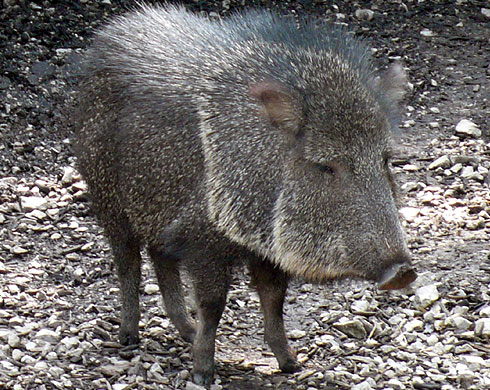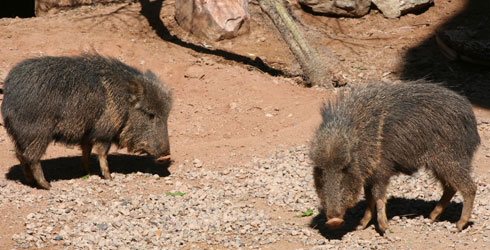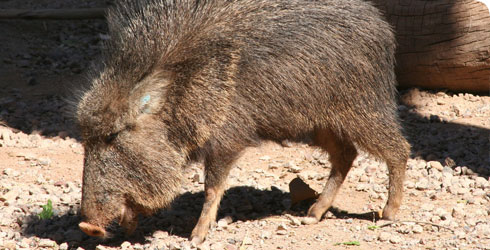Catagonus wagneri
Until 1975, the large Chacoan peccary, Catagonus wagneri, was known only from a fossil specimen and was thought to be extinct.
But during explorations in the remote Chaco dry forest in Paraguay, the peccary was found alive.
The Chacoan peccary has special adaptations for the dry conditions of the Chaco, including:
- large nasal sinuses to prevent dust inhalation
- delicate, slim legs for easier access through dense and often prickly, stunted forest
Catagonus wagneri is considered an endangered species and is disappearing at an alarming rate due to human encroachment, over-hunting and introduced diseases.
Species detail
-

Distribution
There are probably about 3,000 Chacoan peccaries alive today. But where do they live?
-

Biology and behaviour
Chacoan peccaries are territorial and live in herds of up to 10 animals. Find out more about their habits and what sets them apart from other peccary species.
-

Conservation
Catagonus wagneri is threatened by habitat loss and hunting. The spread of disease from domestic pigs is also affecting numbers. Find out what attempts are being made to protect this species.
-

References
Get reference material for Catagonus wagneri.
Images

An adult male Chacoan peccary. Note the small feet and inflated sinuses, both adaptations for moving around thorny scrub and to prevent dust inhalation.

Chacoan peccary.

Chacoan peccary.

Adult female Chacoan peccary with piglets.
© Jamie PhamAbout the author
Julian Pender Hume
Research Associate
Department of Zoology
A word from the author
"The Chacoan peccary was first described from a fossil specimen in 1930, but was found alive and living in the remote areas of Chaco, Paraguay in 1975. It is a true living fossil."
